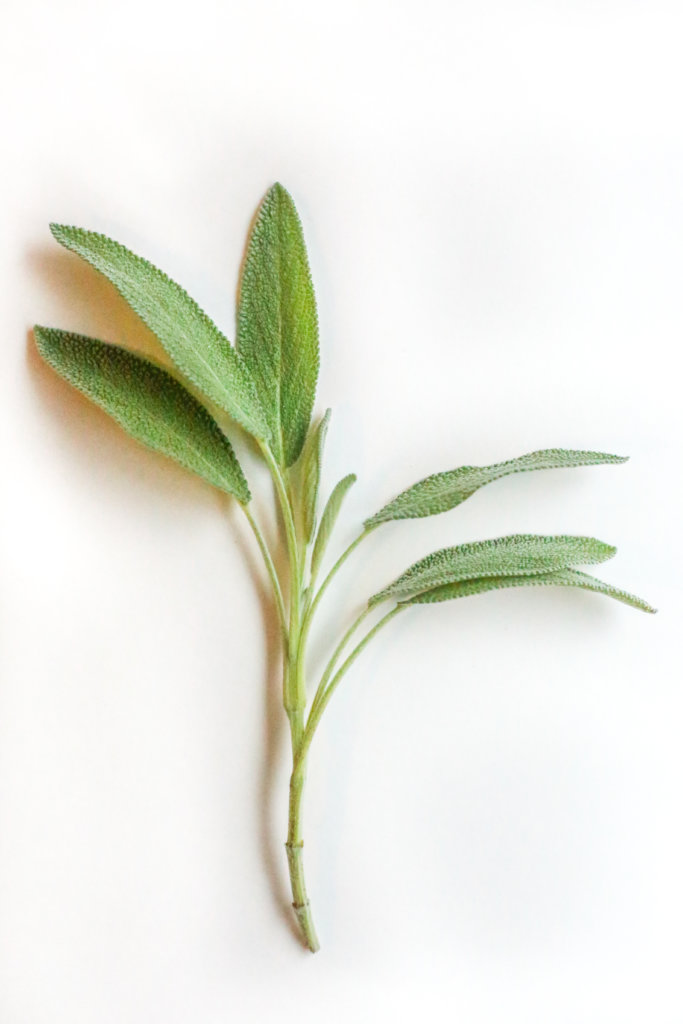
Salvia officinalis
The name Salvia comes from the Latin word salvare, which means “to heal” For such a common pantry herb – Sage truly has a RICH history of use of healing, both medicinally and spiritually.
The benefits and uses of sage are widespread. In the battlefields, sage was used by military doctors, notably Dioscorides, who found sage to be especially helpful in stopping bleeding wounds. In monasteries, sage was planted by monks and used in therapies for themselves and for the community. And in ancient kitchens, sage was used to preserve meat.
Sage is burned ceremoniously to dispel negativity, to purify a person or place. And recent Studies validate these ancient purification practices, showing that medicinal smoke reduces airborne bacteria by 94% for 24 hours. (1)
ACTIONS:
- Astringent
- Antiseptic
- Aromatic
- Reduces Sweating
Topically speaking – Sage’s combination of astringent and antiseptic actions makes it ideal for the skin, especially moist skin conditions where you see an excess of secretions.
It tightens tissue which helps to constrict excess sweat and oils. It reduces inflammation and protects against infection, which is helpful with cuts, burns, sore throats and other conditions where tissue is irritated and healing.
Sage is slightly warming and has anti-spasmodic actions, which help to ease tense or aching muscles. You might add sage to a muscle recovery balm, or bathe in sage to relieve aches and pains.
Sage belongs to the Lamiaceae family, like Rosemary, and this family is known for its rosmarinic acid which is a stimulant that aids in hair growth. Also like Rosemary, Sage is known to help improve memory.
The aroma of sage is stimulating and calming – the perfect combination when you need to feel alert yet grounded and steady. Sage clears away the fog, it brings clarity to the mind. The leaves are so oily and fragrant – you simply need to rub them between your fingers and inhale the essential oils.
TOPICAL PREPARATIONS & USES:
- Gargle sage tea to soothe a sore throat, hoarseness or to cleanse the mouth.
- Fresh sage rubbed on an insect bite is used to help relieve the sting
- A strong sage infusion (in water) can be used as a wound wash
- A sage hydrosol is useful to control excess oils
- Sage infused witch hazel can be a good remedy for deodorizing underarms and feet. You can also bathe in sage or make a foot bath
- Sage hydrosol would be good for oily skin conditions, the astringent action is also helping in toning skin.
- Sage steaming can help purify and tone the skin – you can also use it in vaginal steaming.
- Sage infused vinegar is a good remedy for cleansing the scalp and stimulating hair growth. You might add rosemary to boost that benefit.
- Sage infused oil is helpful in warming tired muscles, while at the same time soothing and calming skin irritations.
- Dried sage can be added to a bath blend, to cleanse and soothe the body and aromatically to bring calm and clarity to the mind.
- Dried powdered sage can be added to facial mask formulations for its astringent actions.
RECIPES TO TRY:
Deodorant Spray
Herbal Steam for Colds
Sage Syrup
Sugared Sage Leaves for Baths
Grow Sage: Click here for seeds
Stock dry Sage in your pantry: Click here for dried herb
